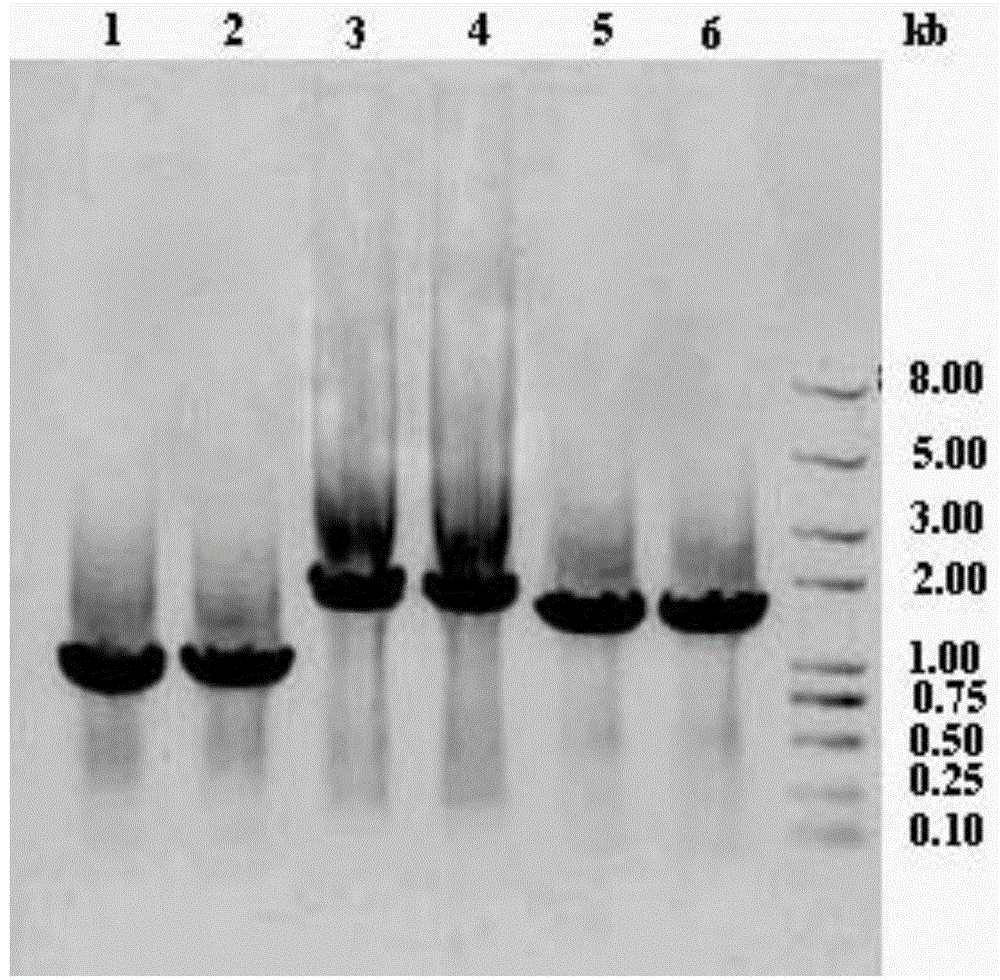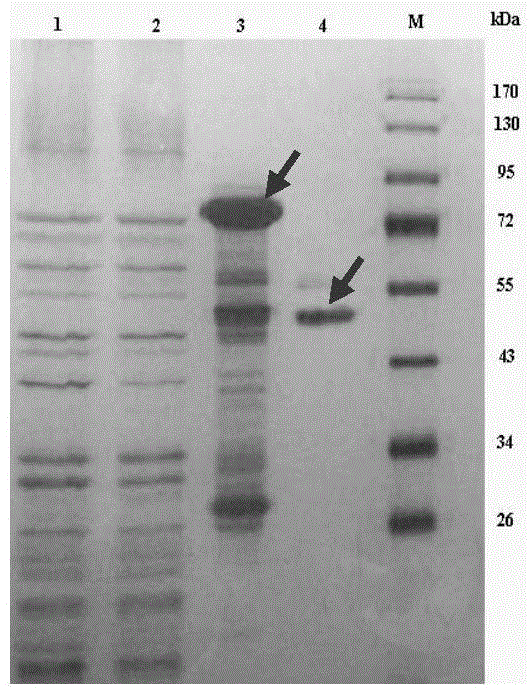Genetically engineered bacterium used for biological catalysis of glucuronidation of flavonoids
A technology of genetically engineered bacteria and glucose coke, which is applied in the field of genetically engineered microbial cells, can solve the problems of low solubility of natural flavonoid aglycon compounds, achieve the effects of improving bioavailability, reducing toxic and side effects, and improving drug efficacy
- Summary
- Abstract
- Description
- Claims
- Application Information
AI Technical Summary
Problems solved by technology
Method used
Image
Examples
Embodiment 1
[0045] Example 1: Escherichia coli genomic DNA extraction: extract the genomic DNA of Escherichia coli BL21 (DE3) with reference to the bacterial genome extraction kit of Tiangen Biochemical (Beijing) Co., Ltd., the specific steps are as follows:
[0046] (1) Take 1-5ml of bacterial culture solution, centrifuge at 10,000rpm for 1min, and remove the supernatant.
[0047] (2) Add 200 μl of buffer GA to the cell pellet, shake until the cells are completely suspended; add 4 μl of RNaseA (100 mg / ml) solution, shake for 15 sec, and place at room temperature for 5 min.
[0048] (3) Add 20 μl of Proteinase K solution to the tube and mix well.
[0049] (4) Add 220 μl buffer GB, shake for 15 sec, place at 70°C for 10 min, the solution becomes clear, and centrifuge briefly to remove water droplets on the inner wall of the tube cap.
[0050] (5) Add 220 μl of absolute ethanol, shake and mix well for 15 sec.
[0051] (6) Add the solution and flocculent precipitate obtained in the previou...
Embodiment 2
[0057] Embodiment 2: Escherichia coli BL21 (DE3) PGM, the construction of the acquisition of GalU gene and expression plasmid
[0058] Acquisition of Escherichia coli PGM gene:
[0059] Based on the nucleic acid sequence of the gene database GenBank registration number EG12144, PCR reaction primers were designed and synthesized:
[0060] PGM_1:5′-ACGTTGCAGACAAAGGACAAAGCA-3′
[0061] PGM_2:5′-GATATA CCATGG CAATCCACAATCGTGCAG-3' (NcoI site is underlined)
[0062] PGM_3:5′-TGTGTG GCTAGC TTACGCGTTTTTCAGAACTTCGCTAAC-3' (NheI site is underlined)
[0063] PGM_4:5′-GCGTAGCGCATCAGGCAATTCTGT-3′
[0064] Using the genomic DNA of Escherichia coli BL21 (DE3) as a template, the first round of PCR was carried out with primers PGM_1 / 4 (95°C, 5min; 95°C, 50S, 50°C, 1min, 72°C, 1.5min, 30cycles; 72°C, 10 min; 4°C, 10 min). Then use the first-round PCR product as a template, and carry out Nested-PCR amplification with primers PGM_2 / 3 (95°C, 5min; 95°C, 50S, 50°C, 1min, 72°C, 1.5min, 30c...
Embodiment 3
[0085] Embodiment 3: the construction of the acquisition of Escherichia coli BL21 (DE3) UGDH gene and expression plasmid
[0086] Acquisition of Escherichia coli UGDH gene:
[0087] The primers for PCR reaction were designed and synthesized based on the nucleic acid sequence of the American gene database GenBank registration number EG13407:
[0088] UGDH_1:5′-AATAAATATCAGCTATTCTTATAAAGAAAATCTG-3′
[0089] UGDH_2:5′-GGATCCCATATGAAAATCACCATTTCCGG-3′(NdeI site is underlined)
[0090] UGDH_3:
[0091] 5′-AAGCTT GTC GAC GGAGCTCGGATCCTAGTAAATCAATCAAATCAATCTGTTC-3′ (the underline is the SalI site)
[0092] UGDH_4:5′-CATCTTGCCACGCCACAACTGCACT-3′
[0093] Using the genomic DNA of Escherichia coli BL21 (DE3) as a template, the first round of PCR was carried out with primers UGDH_1 / 4 (95°C, 5min; 95°C, 50S, 50°C, 1min, 72°C, 1.5min, 30cycles; 72°C, 10 min; 4°C, 10 min). Then use the first-round PCR product as a template, and use primer UGDH_2 / 3 to carry out Nested-PCR amplificati...
PUM
 Login to View More
Login to View More Abstract
Description
Claims
Application Information
 Login to View More
Login to View More - R&D
- Intellectual Property
- Life Sciences
- Materials
- Tech Scout
- Unparalleled Data Quality
- Higher Quality Content
- 60% Fewer Hallucinations
Browse by: Latest US Patents, China's latest patents, Technical Efficacy Thesaurus, Application Domain, Technology Topic, Popular Technical Reports.
© 2025 PatSnap. All rights reserved.Legal|Privacy policy|Modern Slavery Act Transparency Statement|Sitemap|About US| Contact US: help@patsnap.com



